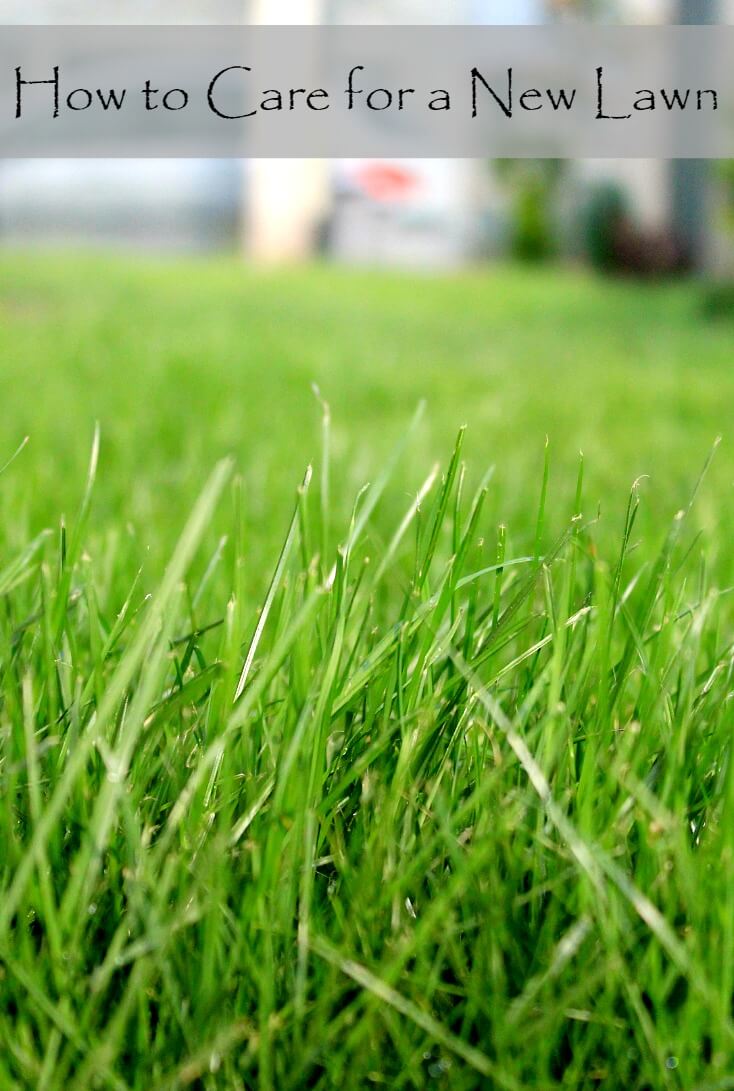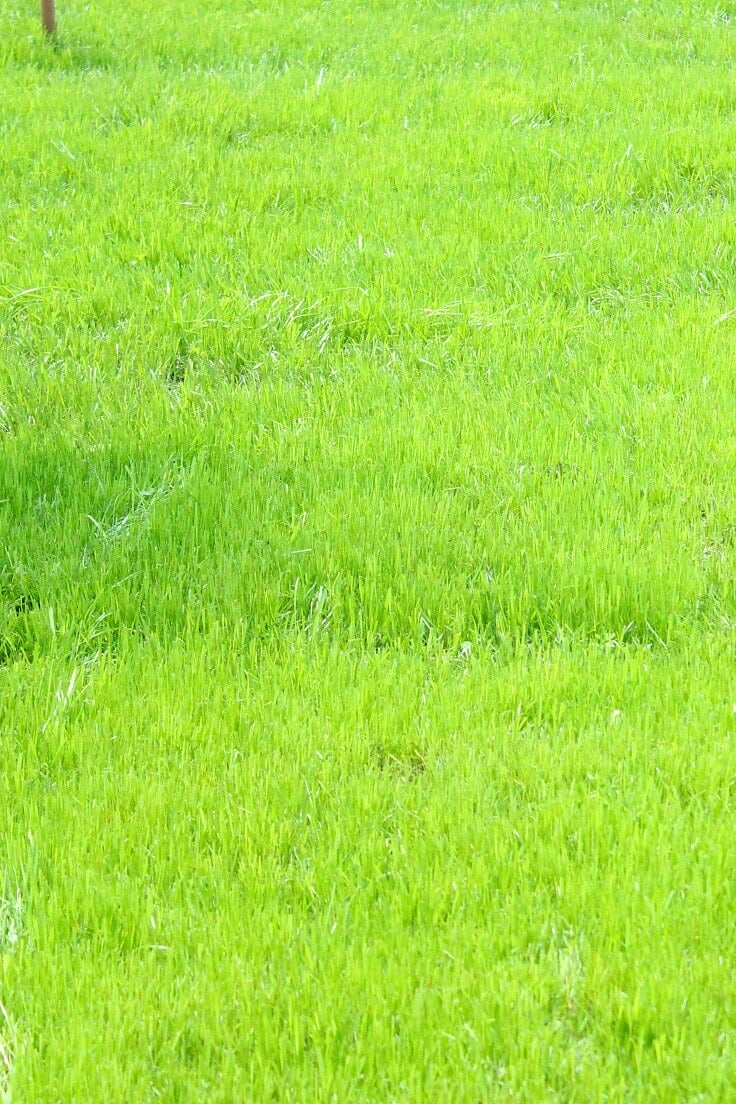How to Care For A New Lawn
Discover the essential tips for how to care for a new lawn to ensure healthy grass growth. Caring for new grass involves a few straightforward steps, including watering, feeding, and mowing!

Today I’m going to continue the series on lawn seeding and care, with a few tips on how to care for a new lawn, based on my own experience and the issues I’ve stumbled upon while growing my lawn. I’ve started to grow my own grass from seeds a while back, in the summer season to be more specific, the worst season of all seasons to plant a new lawn. And I’ve been sharing the lessons I’ve learned in a couple of posts you can find here.
As I’ve highlighted in my other posts, picking the right time to grow your lawn is very important and will make your life thousand times easier. The soil temperature and humidity are simply perfect in fall season and the effort you’ll put into growing a lawn is pretty much minimal.
But no matter the season, these steps on how to care for a new lawn are super important, from watering to feeding, mowing your lawn and getting rid of weeds. If you want a healthy, good looking lawn you will have to put in a little effort. Below are a few basic guidelines on caring for your newly established lawn.
How To Care For A New Lawn

These tips will ensure that your grass grows healthy and strong, creating a beautiful green carpet in your yard. The tips below are applicable to both seeded and sodded lawns, so no matter which method you have chosen, you can follow these guidelines for proper care.
- Minimize foot traffic and play on a new lawn for a few weeks. I went to the extremes and announced my family they won’t be able to play on our (read my!) new lawn for a year. We still walk on it from time to time when there’s no way to avoid it but we do our best not to abuse it since the new grass is still pretty fragile.
- Water your established lawn as early in the morning as possible to take advantage of the daily start of the grass’s normal growing cycle and in summer, to reduce water loss to evaporation. In summer, water a newly established lawn every second or third day, making sure you water deeply so the soil is moist to a depth of about 2″. In fall you may find it’s not necessary to water at all sometimes, especially when it rains heavily. Just check the soil for moisture by sticking a screwdriver in. If it comes out with dry soil, you need to water, if the soil is moist for up to 2″ you can skip the watering for a few more days. I found that my grass retains the morning moisture from the dew pretty nicely so this season I only deep water once in about 2 weeks.
- Feed your lawn regularly. Start fertilizing your new lawn anytime between 4 and 8 weeks since sowing. I use a fertilizer every month, according to the season we’re in. Continue with regular feedings every 4-6 weeks to provide the nutrients your lawn needs to kill the weeds and face the stress coming from drought in summer, mowing or foot traffic. I like to use a fertilizer the morning after I just mowed my lawn, followed by deep watering. Use a seed spreader or a hand held one.
- Mow your lawn as often as possible to stimulate growth. As soon as the grass reaches 3″- 4″, mow about 1/3 of it in summer and about 1/2 in fall. In the summer heat the grass will need to stay taller to retain moisture while in fall this is not necessary as there’s plenty of natural moisture so you can mow your lawn shorter. Make sure it’s not too short though, as it might have a negative impact on grass health. In summer I had to mow my lawn every week but in fall I don’t see the need for up to 2 weeks. I like mowing my lawn between 5 and 7 PM in summer because this way my newly mowed lawn is protected from heat and has plenty of time to recover at night time when it’s cooler. In fall I think the perfect time is in the afternoon as the blades of the grass are not moist anymore, the moisture is only in the roots and I can cut the dry grass easier than in the morning or evening.
- Alternate the direction of mowing each time you mow too.
- Make sure your mower blade is sharp enough, to avoid damage on the grass blades. I sharpen my blades once every season, just a bit, no need to have super sharp blades.
- Clean your lawnmower properly every time you finish mowing. This is to prevent spreading grass disease in case there’s any you haven’t identified yet. Plus it helps your mower last longer if proper care is applied.
- Remove the grass clippings right after you’re done mowing. This is because it might smother any grass seed that has yet to germinate if you’re mowing for the first time. For older grass, the clippings may rotten because of too much moisture and cause the grass around it to rotten too and then die. Also a build up of clippings can eventually create the perfect environment for disease. Some say the clippings, when left in place after cutting the grass, will provide a source of organic fertilizer and will also help the soil retain water which will then promote root growth and a healthy lawn. I found that this is really not working for me, on the contrary, it basically kills my lawn.
- Get rid of weeds regularly. A new lawn is not strong enough to fight the weeds on its own, it needs a little help. I would not apply a weed killer in the first year for the same reason so your best choice is to regularly go around your lawn and pick the weeds by hand. Do this when the soil is a little moist so you can pick their roots too and use gloves to protect your hands.
A few more tips valid for new sod as well as old lawns
- Aeration: It is important to aerate your lawn once a year, especially in heavy clay soils. This will help the soil breathe and allow better absorption of water and nutrients.
- De-thatch: Thatch is a layer of dead grass that accumulates between the soil and the blades of grass. A thin layer of thatch is fine as it can protect the roots from heat in summer, but if there’s too much, it will suffocate the grass underneath. Wait until your second season to de-thatch so you don’t damage your young lawn. Instead use a leaves rake to lightly rake the dead grass, preferably in the early spring or late fall.
- Over seed patchy areas: If you have patches where the seeds did not germinate, simply sprinkle some seeds over them and cover with a thin layer of soil or compost. Water regularly just like you would when over seeding an old lawn and within a few weeks those spots should turn green.
- Proper irrigation techniques: In addition to watering at the right time of day, it’s also important to water deeply rather than frequently. This means that instead of watering every day for short periods of time, you should water less often but for longer periods. Make sure you don’t over water as puddling will case damage to your new beautiful lawn.
Frequently asked questions about lawn care
How often should I water my new lawn?
During the dry weather, set a watering schedule of every 2-3 days and make sure to water deeply so that the soil is moist to a depth of about 2 inches. In the fall, you may be able to skip watering if there has been heavy rain or use a hose to water just the areas that are more exposed to sun.
When should I start fertilizing my new lawn?
Begin fertilizing your new lawn between 4-8 weeks after sowing. If you used a starter fertilizer you may skip the first round. After that, continue with regular feedings every 4-6 weeks to provide essential nutrients.
How often should I mow my lawn?
Best time to mow your lawn is as soon as it reaches a height of 3-4 inches, making sure to only cut off 1/3 of the grass blades at a time. This may mean mowing every week in the summer and every 2 weeks in the fall.
Can I use weed control on my new lawn?
It is not recommended to use a weed killer on a new lawn as it may harm the young grass. Instead, regularly hand-pick weeds while wearing gloves to protect your hands.
How can I encourage root growth in my lawn?
Proper watering and fertilizing techniques will help promote growth in the root system. Aeration and de-thatching can also be done to improve soil health and allow for better absorption of nutrients. Additionally, using a mulching mower can leave small grass clippings on your new turf which provide organic fertilizer and help retain moisture in the soil.
More gardening ideas you will enjoy
- How to prepare the soil for grass seed
- Growing grass from seed
- DIY vinegar weed killer
- DIY natural aphid repellent
- How to care for raspberry bushes
Caring for your newly seeded lawn will not only give you a nice looking, healthy lawn but will also prevent or fight back lawn disease if you were unfortunate enough to deal with that. It’s a pain in the back, I’ve experienced that first hand so following these tips on how to care for a new lawn.
Article may contain Amazon & affiliate links. As an Amazon Associate I earn from qualifying purchases at no additional cost to you.



Some lawn care experts recommend fertilizing your lawn several times a year but recent studies report that cool-weather grasses are best fertilized during late fall. Warm weather grasses, on the other hand, must be fertilized during early spring as their growth peak during the summer.
Hi Della. Thanks for sharing your tips with us!